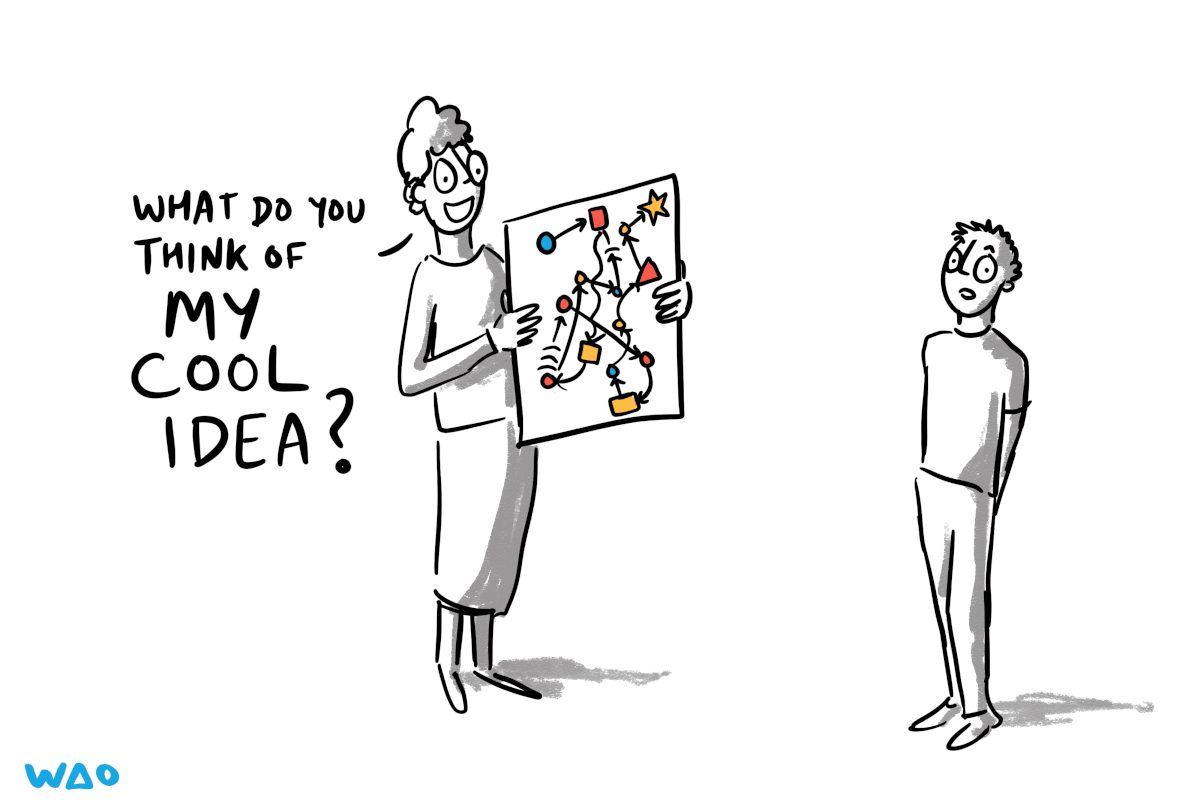Define your audience or your product will (probably) fail
In the past few weeks there have been a couple of occasions where the ‘why’ has been missing from some of the work in which I’ve been asked to be involved.
I’m not talking about the ‘why’ from the supply side, from the organisation that wants to provide the thing; I’m talking about the ‘why’ from the demand side, from the people who might want the thing.
This is not new to me. It was one of the major reasons it was so difficult to get systems of digital credentials based on the Open Badges standard off the ground in the early days: they made sense for the badge issuers, but not necessarily to the badge earners!
During the Catalyst Discovery work I led for We Are Open Co-op last month, we kept returning to one central theme with the nine charities that were involved in the programme. It’s summed-up in this excellent illustration from Bryan Mathers:

In other words, if you show people who you already know something that you’ve made and ask them their opinion of it, they will say things to please you. “What do you think of my cool idea?” is not a fair question to ask people with whom you’re in a relationship. It’s the equivalent of asking your partner “does my bum look big in this?”
Instead, you have to do the hard work of audience definition and then user research. If this were an easy thing to do, then every workshop would have a waiting list, every newsletter would have millions of subscribers, and every product would have made its inventors rich.
It sounds obvious, but if you don’t know who your audience is, then you can only be successful: (i) by accident, (ii) by designing for yourself (as part of the audience group), or (iii) by copying other people. These are not long-term strategies for success.
Once you have defined your audience, congratulations! You now need to find out as much about them as possible. You can do this in passive ways, through reading other people’s research and sifting through data. That’s valuable, but nothing beats being active and going out of your way to actually talk to people about their pains, gains, and jobs to be done.
I tend to use Strategyzer’s Value Proposition Design (VPD) approach for this. I used it when designing MoodleNet, and I use it with clients. In its simplest form, you boil down the thing you create to a series of ad-libs which define your audience, product, and how it helps them:
Our ______ helps ______ who want to ______ by ______ and_____ (unlike ______).
I see too much what I would term ‘magical thinking’ in the world of product design and development. It’s equivalent to the fallacy of build it and they will come which plagues us all from time to time.
If your idea is worth putting into the world, and the main audience is someone other than yourself, then it’s worth talking in advance to the people who you want to buy, read, or use your product.
This post is Day 66 of my #100DaysToOffload challenge. Want to get involved? Find out more at 100daystooffload.com
